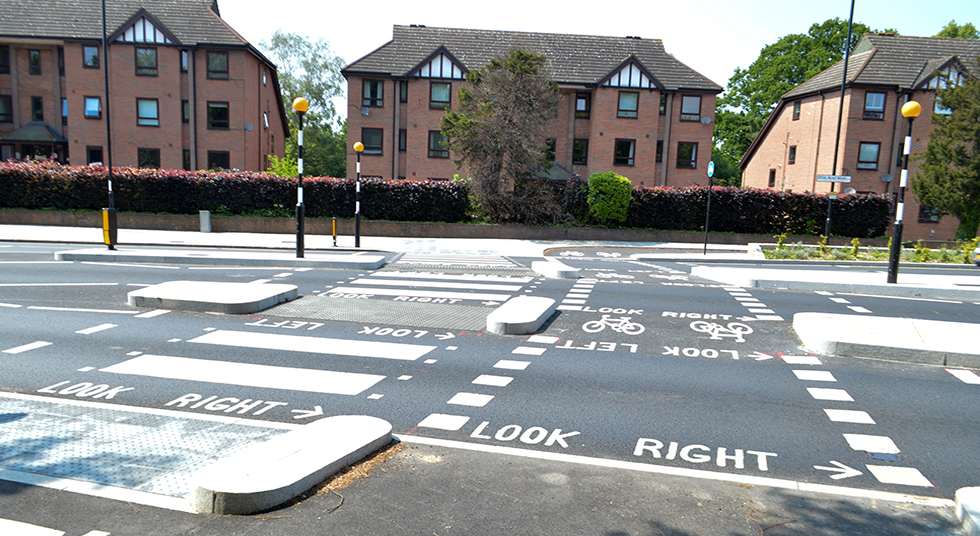Challenges and Solutions
Due to the location of the project, FM Conway had to tailor the scope of works to accommodate the large number of school children who attended a nearby school. Careful planning and phasing of the works were critical to ensuring impact on the public was minimised.
This was achieved with the help of our in-house Traffic Management division who strategically set out temporary road signs, traffic lights and organised lane closures, to allow greater coordination of works. Through active communication we were able to liaise with relevant stakeholders such as the school, shops, Thames Water and TfL to ensure no conflicts were raised and disruptions were avoided.
Jo Barrett, Head of Term contracts at FM Conway, explains:
“The Dulwich Village junction was extremely complex, with many smaller side roads feeding into the main thoroughfare. It was vital that the junctions new design kept navigation clear and straightforward for motorists and cyclists.
“We developed an innovative road layout, which provides a safe space for cycles as well as their own phase in the signals sequence. Working collaboratively with Southwark Council, CONWAY AECOM self-delivered the entire project, from design through to the construction of the road.
“As London’s population continues to boom, making sure we have an extensive cycle network throughout our capital is crucial to combat air pollution and ease pressure on our roads.”
Outcomes
Busy Highway junctions can often pose the greatest challenges for cyclists. Making these safer for all road users has been a priority for CONWAY AECOM and Southwark, who have taken inspiration from the Netherlands, which is famed for its cycling infrastructure.
Jo explains: “Roundabouts can be a hazard for cyclists as the layout funnels bike and motor vehicles along the same route. At Crystal Palace we used roundabouts popular in Holland as our blueprint, adapting the design to meet the needs of the UK road users.
“The roundabouts now segregate cyclists from other traffic. They are channelled around the edge of the roundabout along a separate path, while vehicles are directed around the centre and road crossing are clearly marked for pedestrians.
“The roundabouts are now open to the public and I’m positive they will lead to even greater cyclist numbers in the borough.”
Changes have also been taking place along Southwark’s backstreets, where CONWAY AECOM has been creating a new Quietway network.
Jo added: “Quietway’s are vital to ensuring that as many people as possible are encouraged to get on their bikes. They provide a safe, calm environment for more cautious cyclists, or those who simply want to avoid major routes.”
.jpg)
